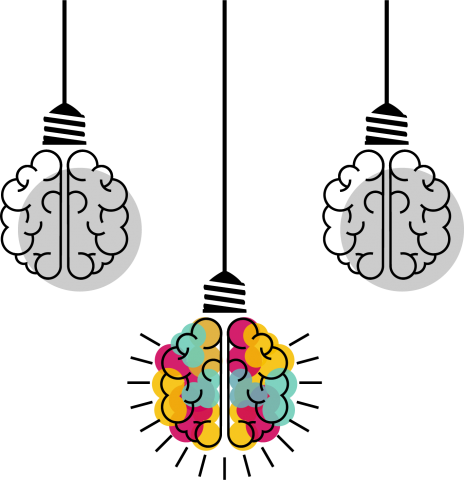 The awards are intended to support activities necessary to advance competitive research proposals. The following is a description of the six brain science research projects. A full list of awardees is available on the website for the Office of the Vice President for Research.
The awards are intended to support activities necessary to advance competitive research proposals. The following is a description of the six brain science research projects. A full list of awardees is available on the website for the Office of the Vice President for Research.
Computational modeling of blood flow to understand microvascular dysfunction in Alzheimer's disease
Alzheimer’s disease, a progressive neurodegenerative disorder affecting millions of people worldwide, and related dementia are becoming the biggest epidemic in medical history. However, Alzheimer's is a heterogeneous and multifactorial disease, making it challenging to fully understand how the multiple etiologies and age-related prodromal processes in Alzheimer's contribute to its pathophysiology. To address this knowledge gap, reserachers performed a longitudinal imaging experiment of tracking progressive microvascular alterations in mice with Alzheimer's for most of their lifespan. Although these data provided rich information about various cerebral microvascular deficits and cognitive impairment, they were insufficient to determine the cause-effect relationships. As part of this project, researchers will develop a computational methodology to investigate the mechanistic question.
Principal Investigator (P.I.): Jonghwan Lee, Assistant Professor of Engineering
Funded: $49,000
Dissociating neurocomputational mechanisms underlying positive and negative motivations for cognitive effort
When deciding how much effort to invest in a given task, individuals weigh positive outcomes that could accrue, such as praise, as well as negative outcomes, like admonishment. However, little is known about the neural and computational mechanisms by which different incentives determine how much and how long individuals invest effort into cognitively demanding tasks. This study aims to identify neural substrates underlying cognitive effort allocation in the face of different incentive types, and measure how differences in sensitivity to these incentives influence a person's motivation to invest effort in their daily tasks as well as their susceptibility to negative health outcomes. This work is expected to bridge research in neuroscience, economics, psychiatry and public health, and advance Brown’s position across those fields.
P.I.: Amitai Shenhav, Assistant Professor of Cognitive, Linguistic and Psychological Sciences
Co-P.I.: Debbie Yee, Postdoctoral Research Associate, Cognitive, Linguistic and Psychological Sciences
Funded: $49,000
Investigating the neural basis of sequential control in obsessive compulsive disorder
Obsessive compulsive disorder (OCD) is a neuropsychiatric disorder that affects approximately 2% of the population over their lifetime. OCD is associated with impairments in behavioral flexibility and compulsive, ritualistic behaviors. These behaviors can often be conceptualized as sequences that are stuck in a "loop" and have to be performed repeatedly and in a ritualized way, such as hand washing or lock checking. This study hypothesizes that patients with OCD may have a deficit in the ramping activity in the frontal polar cortex, and it is expected to contribute to fundamental understanding of the neural circuits underlying OCD.
P.I.: Theresa Desrochers, Rosenberg Family Assistant Professor of Brain Science, Assistant Professor of Psychiatry and Human Behavior
Co-P.I.: Sarah Garnaat, Assistant Professor of Psychiatry and Human Behavior (Research)
Funded: $96,000
Neural metabolomics and infantile epilepsy associated with mutations in SLC13A5
SLC13A5 deficiency is a newly diagnosed form of genetic epilepsy and developmental delay with seizures beginning within the first days of life. In these patients, homozygous mutations in the SLC13A5 gene result in severe, early onset multi-focal epilepsy, as well as cognitive and behavioral symptoms. Progress in finding treatments for this condition has been hampered by the lack of appropriate models to study the brain phenotype. This project aims to create a panel of model systems with pathogenic mutations. The identification of the metabolic and neurotransmitter changes may lead to new treatments for epilepsy and also cognitive/behavioral symptoms associated with SLC13A5.
P.I.: Judy Liu, Sidney A. Fox and Dorothea Doctors Fox Associate Professor of Ophthalmology and Visual Science, Associate Professor of Neurology, Associate Professor of Molecular Biology, Cell Biology and Biochemistry
Co-P.I.: Stephen Helfand, Professor of Biology, Vice Chair of Neurology
Funded: $100,000
New biomarkers for neurodegenerative diseases
Neurodegenerative diseases represent a major threat to human health. This study aims to establish the experimental protocols and analyses pipelines for the discovery of new biomarkers for neurodegenerative diseases. Researchers will test the hypothesis that inflammation is a causative mechanism driving neurodegeneration. Their short-term goal is to identify new cerebral spinal fluid biomarkers for normal pressure hydrocephalus, and to establish experimental and analysis pipelines that will allow them to extend the approach to target other neurodegenerative diseases, including Alzheimer’s.
P.I.: Alexander Fleischmann, Provost's Associate Professor of Brain Science
Co-P.I.s: Petra Klinge, Professor of Neurosurgery, Director of the Pediatric Neurosurgery Division, Director of the Research Center and Clinic for Cerebrospinal Fluid Disorders; Thomas Serre, Associate Professor of Cognitive, Linguistic and Psychological Sciences, Director of the Center for Computation and Visualization
Funded: $50,000
Smarter AI: Designing autonomous systems that optimize hardware, software and cognitive components together
Deep learning, such as convolutional neural networks (CNNs), has gained a lot of attention in the past few years, especially for object identification and classification problems. Despite their strengths, CNNs have several shortcomings, such as their opacity to understand how they make decisions, fragility for generalizing beyond overfit training examples, and inability to recover from bad decisions. This project seeks to explore how humans and intelligent computers can collaborate effectively by integrating technical functions, such as discriminative-generative decision making, with human cognitive processes.
P.I.: R. Iris Bahar, Professor of Computer Science, Professor of Engineering
Co-P.I.: Steven Sloman, Professor of Cognitive, Linguistic and Psychological Sciences
Funded: $76,000